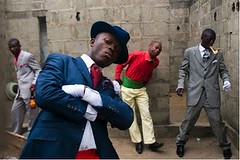I realize I might be unusual. I realize I might be odd to offer it up in this way. I deeply acknowledge, furthermore, that there are a thousand notable exceptions. But barring the relative handful of those who don’t understand personal space, who perhaps “overtouch,” whose intentions are a bit slimy or hostile, I would hereby like to be lightly and lovingly touched at some point by everyone I ever know, meet, connect with, always and forever, quite nearly without exception, and that very much means you.
I feel like I’m on the right path with this. But you never know.
Here’s the fascinating thing: The science on the subject has barely been, you know, touched upon. Research is only now coming to soft light that reveals, say, a gentle touch on the arm is not only sorta nice — it can, in fact, change your entire body chemistry. Your viewpoint. Your world.
Such a touch can release tension. Relax muscles. Stop weeping. Start weeping. Evoke worlds. Invite transcendence. Calm rage. Soften the heart. Open the breath. Touch can alter temperaments and attitudes in an instant. Babies love it. So do romantics, dogs, deities and saints, gurus and wizened masters. An attentive touch carefully placed can pretty much calm everyone the f–k down.
Thus spake a recent, fascinating little study: “Library users who are touched while registering, rate the library and its personnel more favorably than the non-touched; diners are more satisfied and give larger tips when waiting staff touch them casually; people touched by a stranger are more willing to perform a mundane favor; and women touched by a man on the arm are more willing to share their phone number or agree to a dance.”
I think that one of the main reasons that the drug Ecstasy makes people feel good is not just because of its own mood-elevating effects, but because it increases the desire to touch and be touched, and decreases inhibitions. As a result, people on E often end up in “cuddle puddles”, and stroke and and hold each other at length. And this touch causes much of the euphoria people experience on E.
Theresa Field at the Touch Research Institute has written several bookson touch and touch therapy that go into the beneficial effects of touch in more detail.





 As that is a mouthful so it is just SAPE. “Sape” comes from a French slang that means “dressing with class” and the term Sapeur is an African word that refers to someone that is dressed with great elegance. The Sapeurs as the name suggests are elegant and stylish men from Congo who roam the streets of Brazzaville and Bacongo in Western suits and usually with cigars, and the occasional pipe, between their lips. These are men who are so obsessed with looking good and designer clothes that they sometimes place more importance on clothes than anything else.
As that is a mouthful so it is just SAPE. “Sape” comes from a French slang that means “dressing with class” and the term Sapeur is an African word that refers to someone that is dressed with great elegance. The Sapeurs as the name suggests are elegant and stylish men from Congo who roam the streets of Brazzaville and Bacongo in Western suits and usually with cigars, and the occasional pipe, between their lips. These are men who are so obsessed with looking good and designer clothes that they sometimes place more importance on clothes than anything else. This moral code, however, also had a political motive. Papa Wemba initially introduced the culture as a challenge to the strict dress codes that were imposed by the government at that time who effectively outlawed Western styles of dress. In 1974 after the DRC had recently come out of colonisation and had gained its independence from France, the government lead by Mobutu Sese Seko banned all European and Western styles of imported clothing in favour of a return to traditional African clothing. Papa Wemba challenged these strict dress codes by insisting that it should be a pleasure rather than a crime to wear clothes from Paris and by setting an example for impressionable young men by dressing outlandishly. At this time, the culture also was heavily associated with music, since Papa Wemba supported young talented musicians such as Koffi Olomide.
This moral code, however, also had a political motive. Papa Wemba initially introduced the culture as a challenge to the strict dress codes that were imposed by the government at that time who effectively outlawed Western styles of dress. In 1974 after the DRC had recently come out of colonisation and had gained its independence from France, the government lead by Mobutu Sese Seko banned all European and Western styles of imported clothing in favour of a return to traditional African clothing. Papa Wemba challenged these strict dress codes by insisting that it should be a pleasure rather than a crime to wear clothes from Paris and by setting an example for impressionable young men by dressing outlandishly. At this time, the culture also was heavily associated with music, since Papa Wemba supported young talented musicians such as Koffi Olomide.
4
Comments